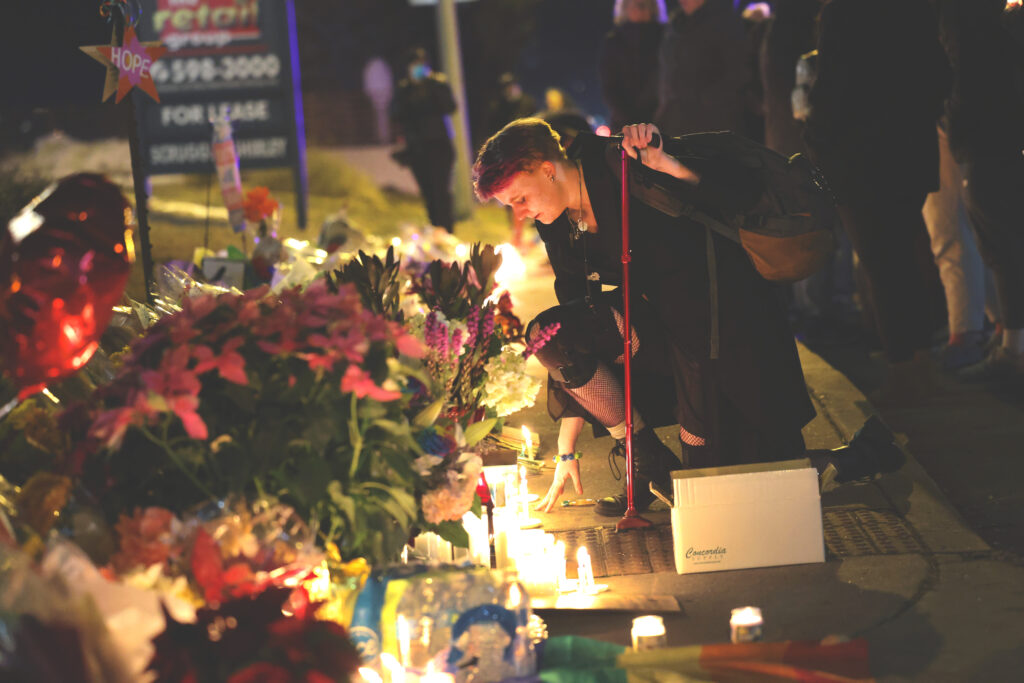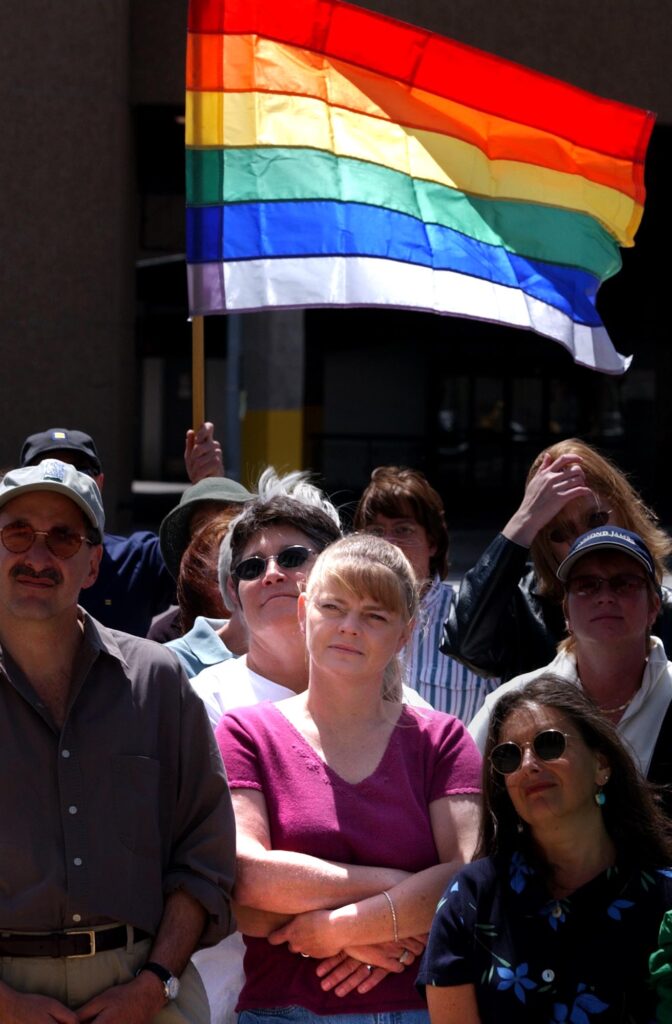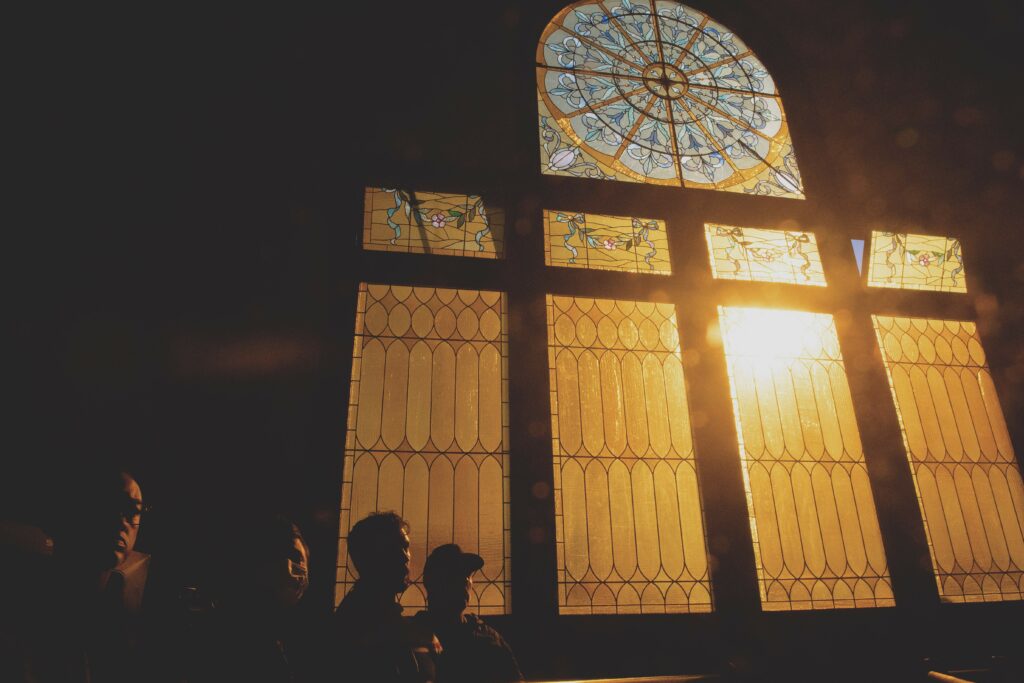A Mass Shooting in the “Evangelical Vatican”

“Every citizen has a right to feel safe and secure in our city, to go about our beautiful city without fear of being harmed or treated poorly,” proclaimed Colorado Springs’ Police Chief Adrian Vasquez in response to the tragic shooting at Club Q this past weekend. For the town’s LQBTQ population, safety and security have often not been guaranteed. The horrendous shooting at the nightclub, which killed five people and injured 19, follows decades of discrimination and hostility against LGBTQ community members in this conservative town.
I am an anthropologist who spent over a year in Colorado Springs, Colorado, studying the evangelicals who shape so much of the city culture and wrote a book based on this research. Colorado Springs, known informally as the “Evangelical Vatican,” is home to dozens of predominantly White evangelical organizations and several prominent megachurches. What I found through my research is that evangelicals are virtually united in agreement that people who identify as gay, lesbian, bisexual, and/or trans are not following God’s desires and don’t deserve civil rights. They see these views, and their efforts to implement them in policy, not as discrimination but as efforts to enact God’s will in the world.
Many commentators are connecting the shooting to the recent escalation of rhetoric against LGBTQ communities across the U.S. Efforts to secure civil rights for LGBTQ people are often rebranded as “special rights.” Take, for instance, Colorado Representative Lauren Boebert, who described the Equality Act, a bill that would expand federal civil rights protections to sexual minorities, as the “supremacy of gays and lesbians and transvestites” above everyone else. We can also look to increasing attacks against queer-friendly family events such as Drag Queen Story Hours, fueled by homophobic and transphobic commentators on social media and conservative media. This rhetoric has also been linked to increases in hate crimes in Colorado.
But, in Colorado Springs, anti-LGBTQ rhetoric and policy have shaped the city for decades, making local LGBTQ people particularly vulnerable to multiple forms of harm.
In the early 1990s, the Colorado Springs City Council set up a Human Relations Commission to debate whether the city should implement nondiscrimination policies, including for sexual orientation. At the time, residents had no legal recourse if they were fired or denied housing due to their perceived sexual orientation or transgender status. The local conservative Christian community banded together to oppose this expansion of rights. People serving on the commission received death threats and required guards to accompany them to and from meetings where protestors had gathered. Responding to this pressure, the City Council eventually disbanded the commission.
A local group of evangelicals then organized to permanently oppose gay and lesbian rights. In 1992, the group placed a referendum on the statewide ballot that would forbid any city or county government in the state from granting protected legal status—what they called “special rights”—for sexual orientation. Amendment 2 won by a two to one margin in the state. This ensured that lesbian and gay citizens of Colorado lacked civil rights protection from forms of discrimination based on sexual orientation. The Supreme Court struck down the amendment in 1996, but this left lasting scars on the local community.
In 2002, the City Council extended benefits to cover same-sex partners of city employees. This inspired another anti-LGBTQ rights campaign, and evangelicals succeeded in voting in a new set of City Council members who then voted to overturn same-sex partner benefits a few months after they were implemented.
In 2008, Colorado again debated whether to extend civil rights protection to cover LGBTQ citizens. The local conservative Christian radio stations ran ads on repeat dubbing the legislation “the Bathroom Bill,” as one element of it allowed trans people to use the public restrooms of their choice. Tom Minnery, then senior vice president at Focus on the Family Action (the political arm of Focus on the Family, one of the most influential evangelical organizations), warned in a Denver Post editorial that the new legislation would “forcibly normalize all varieties of sexual orientation.”
Despite these criticisms, then-Gov. of Colorado Bill Ritter signed the new legislation into law, finally prohibiting discrimination based on sexual orientation and gender identity. The director of the Colorado Springs Pride Center described to me how important this moment was for the local LGBTQ community, who had been so traumatized by the repeated attacks on their rights that community building had been difficult. Since then, the local LGBTQ community has continued this work, organizing a yearly Pride celebration and, through venues like Club Q, organizing all ages Drag shows and Transgender Day of Remembrance events.
Yet, even with the securing of these rights, evangelical groups in Colorado Springs have continued their protests. And homophobia and transphobia continues to shape White evangelicalism.
During my research, I heard dozens of stories of evangelicals and ex-evangelicals losing their religious and social communities, families, and sometimes their faith in response to either coming out as LGBTQ or taking a position supporting LGBTQ rights. Parents who supported a gay or lesbian child were told by church elders to either quit posting photos of their child on social media or to leave their church. People were fired from church positions if they came out in support of LGBTQ rights. And countless parents severed relationships with their children because of their child’s sexual or gender identity.
The harm stemming from this oppression goes deep. In general, LGBTQ youth experience significantly higher rates of suicide. While difficult to assess, given that not all individuals who identify as LGBTQ are reported as such, an analysis of the National Violent Death Reporting System found that almost 24 percent of suicide deaths of 12- to 14-year-olds were LGBTQ. Although this rate dropped significantly, to 8 percent, for 25- to 29-year-olds, suicide rates remain higher for LGBTQ individuals than their heterosexual-identified peers.
Studies show that a landscape of reduced legal rights and protections is also associated with increased violence against LGBTQ people. Transgender people in particular experience rates of violence far higher than the rest of the population. This is particularly true for Black and Latinx trans people. Transgendered youth are also susceptible to self-harm. The American Academy of Pediatrics found that transgendered youth had far higher rates of attempted suicide compared to their cis-gendered peers, with around 30–50 percent of trans youth reporting such attempts.
Despite the widespread effects of this discrimination, the evangelicals I spent time with for my research tended to see themselves as the victims of an LGBTQ rights movement that wanted to discriminate against Christians. “Why do they hate us?” individuals would often ask about gay and lesbian groups that would sometimes protest at local Christian political organizations. By framing themselves as victims, or vilifying LGBTQ people as “groomers,” they can advocate for the right to discriminate while denying the harms their actions cause.
As we mourn the devastating loss of the five people murdered and the numerous lives disrupted by this terrible event, we should understand the local LGBTQ community had already been hurt by decades of anti-LGBTQ organizing. As a Colorado Springs nonprofit serving LGBTQ youth, Inside Out Youth Services, stated about the shooting, “The youth we serve deserve better—they deserve to be safe from fear, threats, and violence.” It takes a community to ensure this. My hope is that the whole Colorado Springs community reckons with how to make sure everyone in the community, no matter their gender or sexual identity, feels safe from fear moving forward.


































